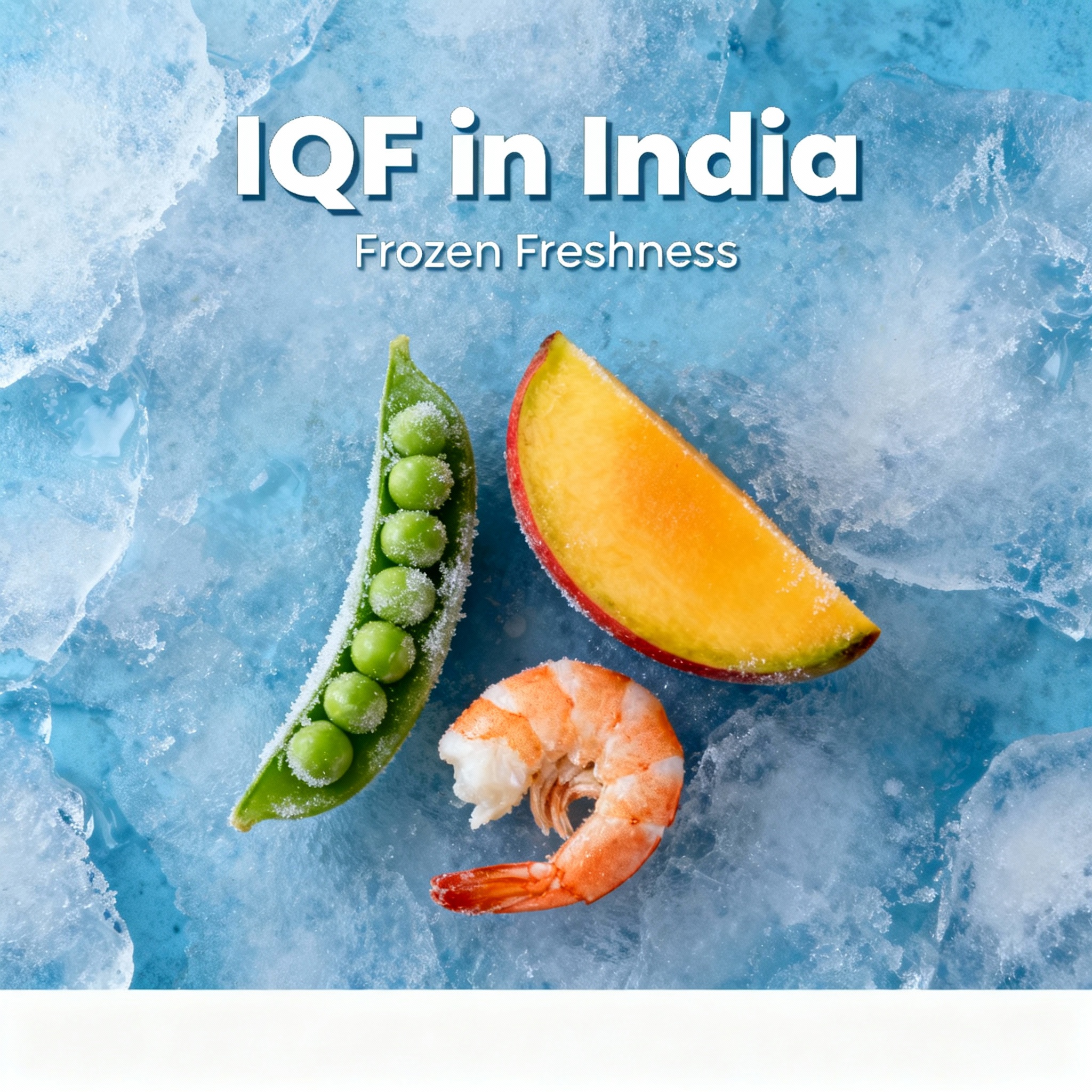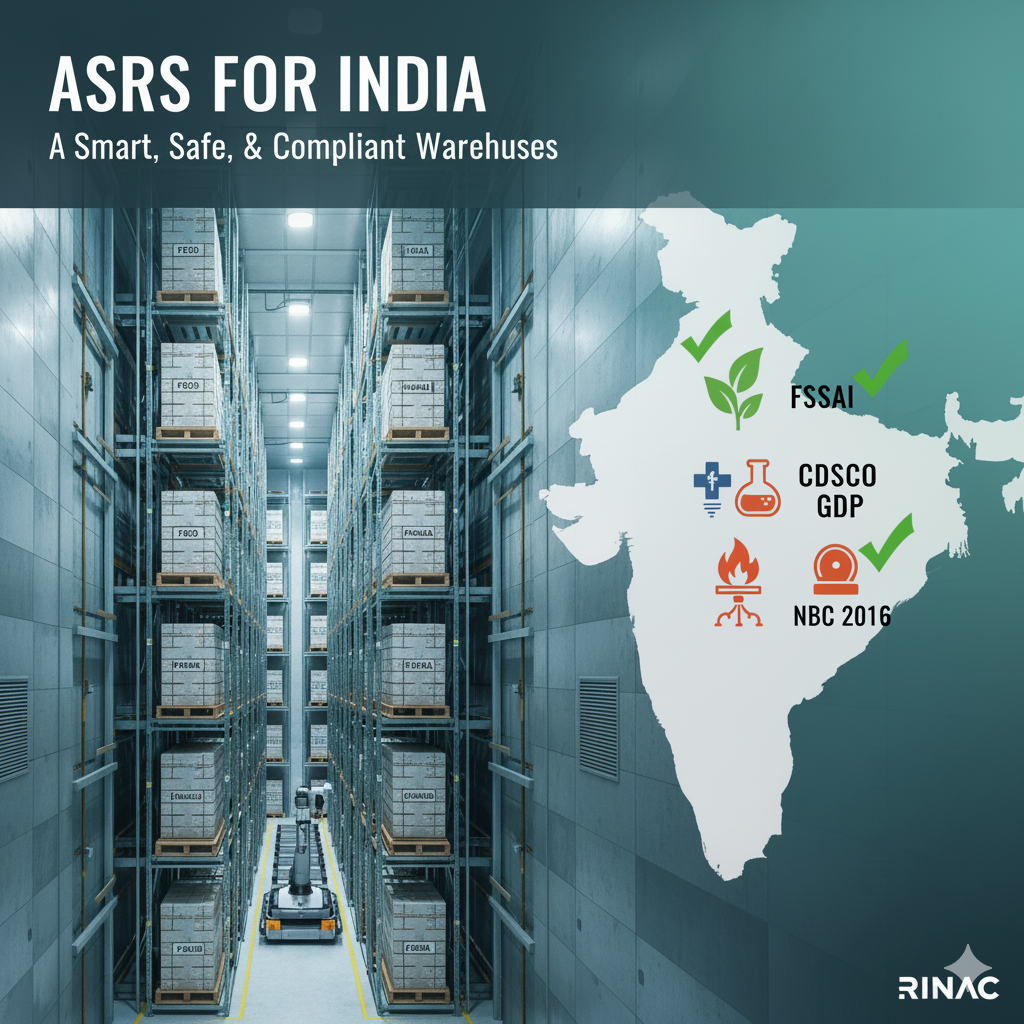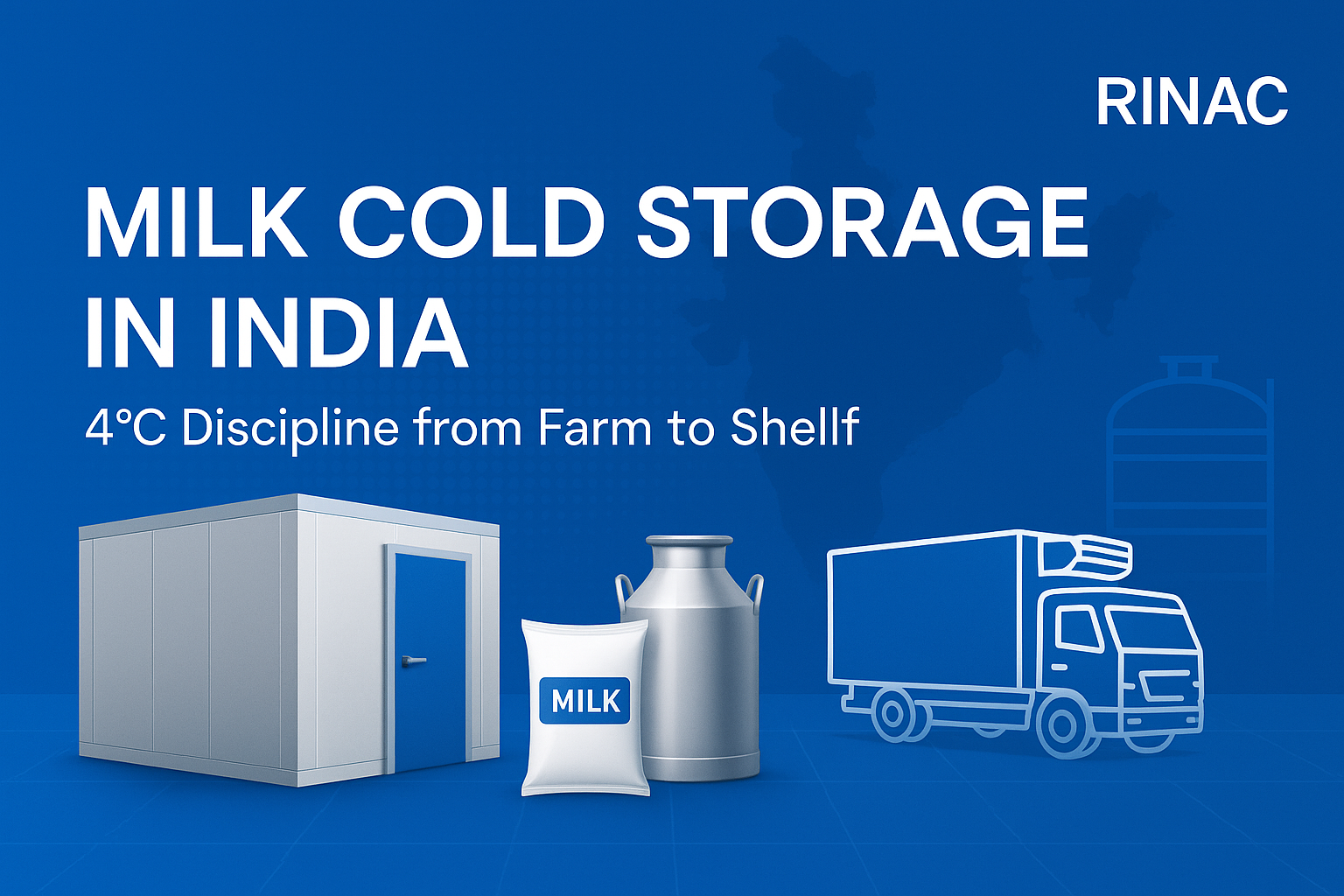Individual Quick Freezing (IQF) in India: The Ultimate Guide for Safe, High-Quality Frozen Food Processing

Admin
September 29, 2025


September 29, 2025

Individual Quick Freezing (IQF) is a breakthrough for food processors and exporters in India, offering a way to freeze fruits, vegetables, seafood, poultry, and meat products quickly and efficiently. It helps Indian companies meet world-class quality, maintain food safety, and expand into new markets.
IQF stands for Individual Quick Freezing. In this method, every piece of food—like peas, mango cubes, or fish fillets—is frozen separately, not as a block or clump. This means foods remain free-flowing, easy to portion, and keep their taste, color, texture, and nutritional value much better than bulk freezing.
Peas, corn, okra, mango, shrimp, berries, and ready-to-eat meals are popular IQF products in India.
Each unit is exposed to very low temperatures and high-velocity air, making freezing ultra-fast—often in minutes, not hours.
IQF uses blast freezers or tunnel freezers with straight or spiral belts.
Products move across belts inside the freezer, getting hit by high-speed cold air (“fluidization”).
A crust forms on each piece rapidly, locking in moisture and protecting fragile food surfaces. This first step is crucial: it prevents lumping and protects texture.
Core freezing follows, finishing the process while keeping weight, appearance, and taste intact.
Rinac offers freezers designed for varied Indian conditions and product types, with matching refrigeration packages and energy efficiency.
IQF ensures every piece is frozen on its own, so products do not lump together or turn into a block of ice, making them much easier to handle, store, and portion.
Fast freezing locks in natural flavors and nutrients, so the foods taste fresh—even after months in storage.
Foods resist freezer burn and maintain high quality throughout their shelf life. This reduces waste in kitchens, stores, and during exports.
IQF products meet high global standards, opening up export opportunities to GCC, Europe, Southeast Asia, and beyond.
Indian tropical fruits and vegetables like mango, okra, papaya, and mixed vegetables demand premium pricing overseas due to better quality from IQF freezing.
Ready-to-eat meals, frozen snacks, and processed vegetables use IQF for convenience and quality.
Kitchens save prep time by using IQF vegetables, fruits, and proteins—no more icy blocks to chop.
Taste and safety are consistent, making hotels and restaurants trust IQF supplies for their menus.
IQF helps exporters comply with international food safety (HACCP, ISO, USFDA, BRC, HALAL) and Indian standards (FSSAI, APEDA).
Cold chain logistics keep products frozen from farm to port, protecting export value.
Food Safety and Standards Authority of India (FSSAI): Ensures all IQF foods meet hygiene, safety, and quality norms for domestic and export.
Agricultural and Processed Food Products Export Development Authority (APEDA): Regulates exports, offers certification, and ensures products meet global expectations.
International Standards: Common standards include HACCP, ISO 22000, USFDA, BRC, and HALAL for safe, traceable exports.
Exporters must secure:
FSSAI license
APEDA registration
HACCP/ISO certificates
Phytosanitary certificate for produce
Every step in the supply chain—processing, storage, transport—requires precise temperature control and robust infrastructure.
Temperature logs, insulated packing, and correct labeling are all essential to meet regulations and avoid spoilage during transit.
Modern processing facilities in India now use automated systems, remote monitoring, and renewable energy to increase reliability and efficiency.
The IQF equipment market in India is growing at 5.6% CAGR in 2025, driven by rising demand in food processing and exports.
Urbanisation is increasing demand for ready-to-cook meals, reliable food service supply, and premium consumer products—further accelerating IQF adoption.
Government schemes (PM FME, Operation Greens, PLI) support cold chain investments, reduce operating costs, and offer incentives for new entrants.
| Product | Main Market | Value Proposition |
|---|---|---|
| IQF mango cubes | GCC, Europe, Asia | Tropical, premium price, consistent flavor |
| IQF green peas | Global exports | Bulk supply, easy portioning, year-round |
| IQF okra | Middle East, Asia | Local specialty, high retention of texture |
| IQF mixed veg | Food service | Ready-mix, saves prep time in kitchens |
Capacity: Get a freezer that matches your daily throughput—small units for startups, larger ones for big processors.
Product Type: Some systems are better for fruits, others for seafood or poultry.
Energy Efficiency: Look for low energy use and automated controls to save on operating costs and badge compliance for sustainability.
Ease of Cleaning: Hygiene is key for compliance, so pick freezers with easy-to-clean features and sanitation reporting.
Future Expansion: Modular systems help businesses add capacity when demand increases.
Support & Training: Reliable brands like Rinac offer support, repair, and training for staff, keeping operations smooth and in compliance.
Use government schemes for subsidies and credit support when starting or scaling an IQF plant.
Invest in digital monitoring and automation to reduce human error and improve cold chain efficiency.
Build relationships with high-volume buyers (hotels, restaurants, international exporters) by showcasing your compliance and quality control.
Stress the natural taste, frozen-fresh quality, and safety of your products in all marketing and product labels.
Tap into growing urban and export demand for convenience foods by offering IQF packs in smaller, retail-friendly sizes.
India faces 30–40% post-harvest loss in fruits and vegetables due to poor cold chains and processing delays. IQF closes this gap by letting processors freeze produce right after harvest, protecting freshness and value.
Achieving HACCP, USFDA, and other high-standard certificates is non-negotiable for exports. Invest early in compliance, training, and documentation to avoid shipment rejections and lost revenue.
Energy-efficient freezers, streamlined logistics, and bulk buying of raw materials help keep costs low. Seek modular, compact systems if starting small, as these have lower upfront investment.
India’s IQF sector will keep growing due to more frozen food demand, tech improvements, and support for food exports.
The government is expected to keep supporting cold chains, food parks, and quality certification for exporters.
Indian processors can gain further market share globally by maintaining strong standards and building robust supply chains.
Individual Quick Freezing is now a must-have across food processing, export, and foodservice in India. It ensures consistent, safe, and high-quality products that can reach markets at home and abroad, all while meeting strict regulatory demands and growing consumer expectations. Companies that invest in the right IQF technology, comply with standards, and adapt to changing market needs will win in the Indian and global food markets.

September 29, 2025

September 24, 2025

September 13, 2025

September 7, 2025